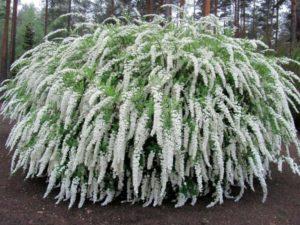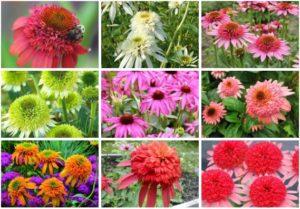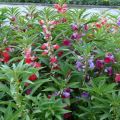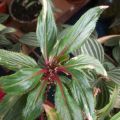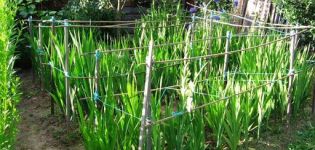Description of Waller balsam varieties, cultivation, reproduction and care
A plant of a herbaceous type, perennial Waller (Waller), fell in love with flower growers for beautiful double inflorescences of the original shape and colors. The people call this type of balsam "Vanka wet" or "Impatient". The flower is capable of scattering seeds over long distances at the slightest touch. The plant is used in landscape design, where the flower is used in various combinations.
Description and characteristics
Waller's balsam is a prominent representative of the Balsaminov family. The plant is perennial, but is often grown as an annual flower. Main distinguishing features and features:
- Powerful root system.
- A thick, juicy, but fragile stem.
- The leaves are deep green, wide, elongated with small even denticles around the perimeter.
- Inflorescences form in groups or grow one at a time.
- The seed fruit is a capsule.
- Plant height - up to 60 centimeters.
- The color of the flowers is varied: from white to deep purple.
The plant is thermophilic, in northern latitudes in open ground it is cultivated as an annual. Not able to withstand severe winters and frost.
History of origin
The homeland of Waller's balsam is the rainforests of Zanzibar. The view was discovered by the emperor of this country in the 19th century. Used as a landscape decoration in the palaces of the rulers of the East. During the Renaissance, balsam formally won the hearts of Europeans.
Despite the fact that Vanka is wet - a thermophilic flower, he feels good in the middle zone of our country. The main thing is not to leave balsam for the winter in the open field, it must be transplanted into a pot.
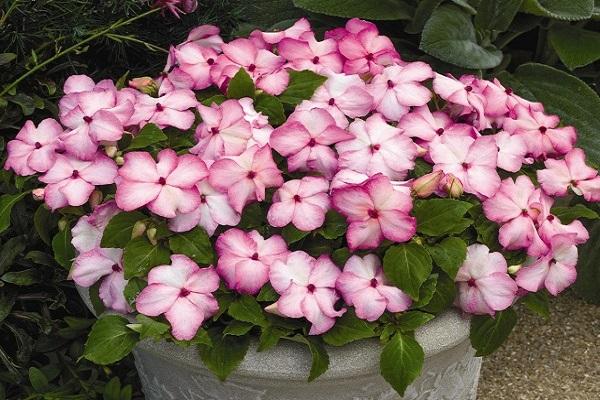
Varietal variety
The color scheme and varietal variety of Waller's balsams are pleasantly surprising. The flower can be matched to various landscape compositions, flower beds, alpine slides. Used as a curb plant.
Gardeners have a choice of which balsam to plant. Some growers grow several different varieties on the site at once.
Musica pure white
Luxurious double pale white large flowers completely cover the bush.The inflorescences resemble roses, the flower diameter is 20 millimeters. Perfect for growing in flowerpots, individual pots. Demanding to watering, does not tolerate drought.
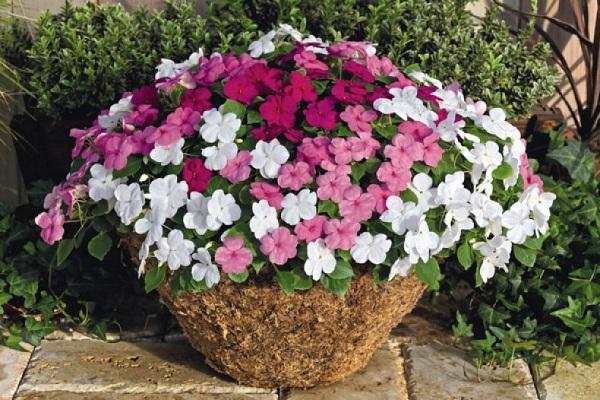
Musica bicolor dark red
Classic red combined with transitions to white is a distinctive feature of the color of the inflorescences. Each flower is individual and unlike the other. The bush is compact, of small height.
Musica fine purple
The cosmic purple color of the inflorescences is mesmerizing. Flowers are large, double, bloom amicably. The plant loves moisture, it is permissible to grow in the presence of partial shade. Forms a powerful root system.
Musica red crimson
Unforgettable scarlet color of large double inflorescences. The plant looks great in flower arrangements and individual pots. The bush is powerful, spreading. Regular watering is required.
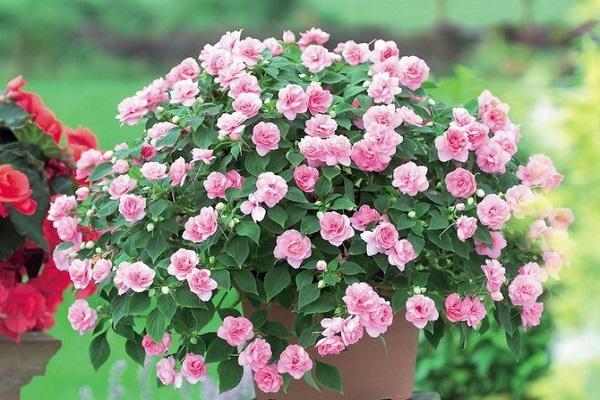
Musica pink energy
Vigorous Pink is the literal translation of the variety name. The color saturation is really surprising. Decorate terraces and balconies of gardens and cottages. Looks great in compositions with Musica pure white.
Musica orange energy
The juicy red-orange color of the inflorescences in flower arrangements and landscape projects looks piquant. Flowers are large, double, completely cover the bush. Does not tolerate drought and dry soil.
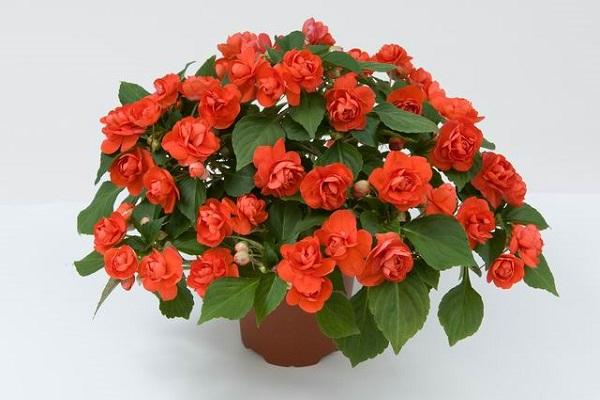
Care
Despite the fact that the flower feels great when grown indoors and has shown itself well in open ground conditions, it is necessary to carry out competent care for balsams.
Landing
Balsam is planted with seeds or cuttings. For open ground, the best planting time is early June. It is necessary that the threat of frost has passed and a stable temperature plus has been established at night. The site for the flower is chosen sunny, well-lit. In lowlands, with stagnant moisture at the roots, balsam will not grow.
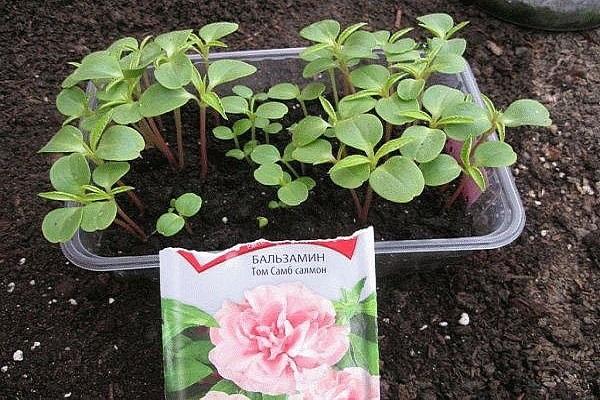
Pot selection
Choosing the right container for balsam will not be difficult. The root system of the flower is powerful, but superficial, the roots do not go deep. A shallow pot with a wide mouth is optimal.
On a note! The tighter the flower in the pot, the more ovaries and flowers it will pick up.
In landscape design, they use a tricky technique: several seedlings are planted in one container, you can plant various color variations together. The bush will look more luxurious and elegant.
Soil preparation
Waller's balsam does not like acidic soils. The soil should be loose and nutritious. You can use a ready-made peat-sand mixture for flowering plants or make the composition yourself. Deciduous humus is mixed with peat and sand in equal proportions.
Important! In a flowerpot, there must be a drainage for the roots. Balsam does not tolerate stagnant moisture.
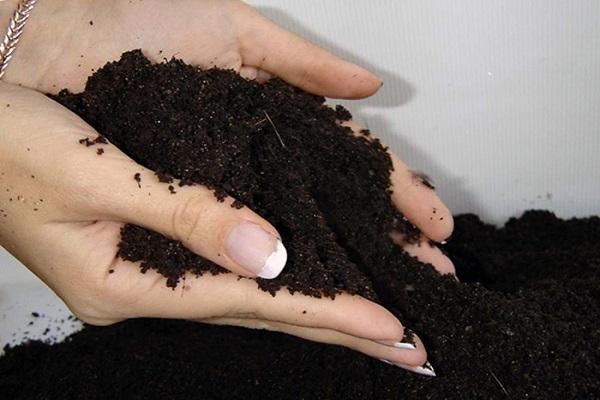
Transfer
Vanka wet tolerates transplantation, which can be carried out even during the flowering period. With indoor growing, it will be necessary to update and thin the bush no earlier than in 2-3 years. This procedure is best done in early spring. If the plant feels comfortable, blooms profusely, does not throw off the leaves and does not lose its beautiful appearance, then it is not necessary to transplant.
Watering
Balsam is a moisture-loving plant with a thick, succulent stem. Drying of the soil is not allowed. Watering is carried out in the early morning hours or late in the evening, preferably using drip irrigation. The water should be warm, low in alkali.
Humidity
The plant is native to hot tropical forests, loves warmth and humidity. To prevent the leaves from losing their color and wilting, in the summer they must be sprayed with water from a spray bottle. If you add 10 drops of brilliant green (per 10 liters of water) to the solution, the color of the foliage will improve, the bush will receive additional energy and antiseptic treatment.
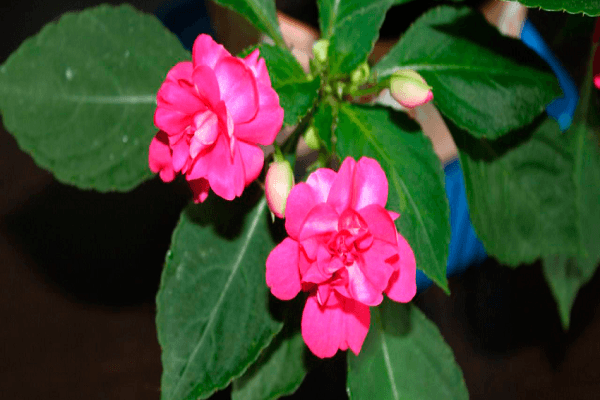
Thermal regime
Optimum temperature for growth and flowering +25 FROM.Long, "incinerating" rays of the sun are destructive. When growing plants on the balcony, shading is required. In winter, the air and soil temperature should not fall below +10 FROM.
Illumination
Waller's balsam is a plant of long daylight hours. The more light the flower receives, the better it will feel and bloom profusely. It is important to remember that prolonged exposure to direct sunlight can cause leaf burns.
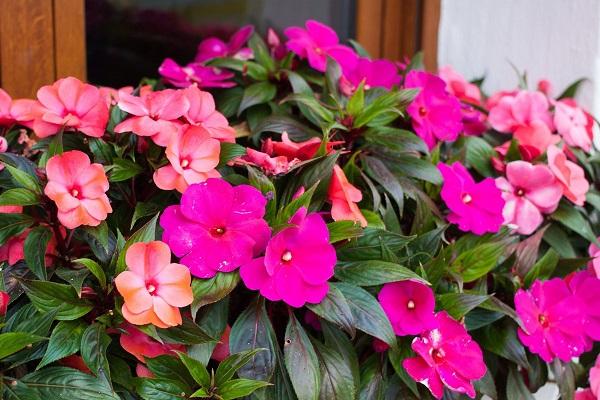
Reproduction methods
Balsam propagates easily, using cuttings or seeds. Under natural conditions, the plant increases its population due to "spraying" of seeds from a ripe seed pod over considerable distances.
Seeds
Before planting in the ground for seedlings, the seeds are soaked and disinfected in a solution of potassium permanganate. The soil should be light, with the addition of sand. The best time for sowing is March. The first shoots will appear in 10 days. In the three-leaf stage, the plants are dived and transplanted into individual containers. At the beginning of summer, balsam is planted in open ground.
Cuttings
When grown indoors, balsam is propagated by cuttings. A small twig 6-8 centimeters long is cut off from an adult plant and the lower leaves are removed. The stalk is placed in water in a small container. After 10 days, roots will appear, when the root system grows, the branch is transplanted to a permanent place. The process is easy, the plant quickly takes root, after a month it begins to bloom.
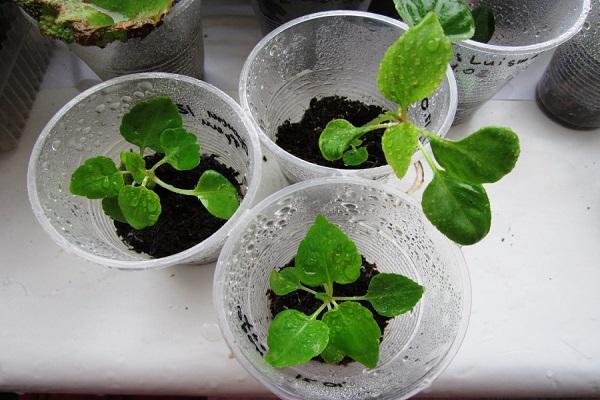
Growing from seeds
At first glance, growing balsam from seeds seems to be a difficult task. In fact, this is not the case. Seeds have good germination, young sprouts are distinguished by high growth rates. Subject to agricultural technology, three months after sowing, the plant will delight the gardener with gorgeous flowers.
Land requirements
Loose soil with a neutral pH level is the main requirement of balsam for the soil. Drainage can not be installed in seedling boxes, but its presence in permanent containers is mandatory. Looseness of the soil can be achieved by adding sand.
Planting in a seedling box
The seeds are planted at a distance of 10 centimeters from each other in a checkerboard pattern and sprinkled with earth, and then watered. The box is covered with foil and placed in a bright, warm place. The optimum temperature for seed germination is from +20 From to +22 C. The first shoots will delight gardeners in 10 days.

Temperature
The optimum temperature for seed germination is from +20 From to +22 C. Film greenhouses must be ventilated and condensate removed. At lower or higher temperatures, seed germination slows down.
Picking
Young sprouts are planted at the stage of three leaves. By this time, the root system was sufficiently formed, the plant is ready for picking. The pots are used not deep, but with a wide neck (10 centimeters). The pinching of balsam is done at the stage of the seventh leaf. This activity promotes the formation of a more lush bush.
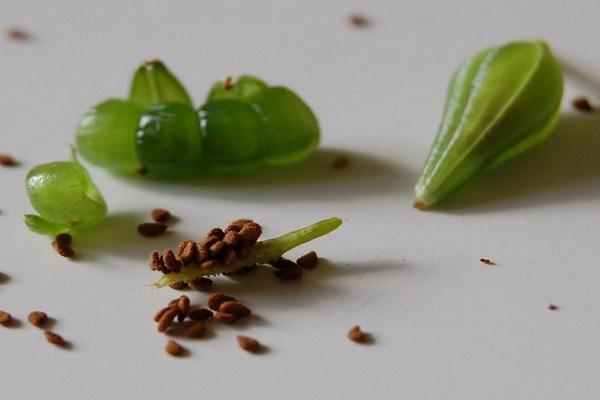
Hardening
Balsam needs hardening, the plants will be more adapted to the conditions of the Russian summer. Gradual adaptation of seedlings to cool temperatures begins in May. Plant pots are placed on the terrace or balcony for a short time.
Transfer
With a long-term growing system, the flower is transplanted after 2-3 years, by which time the roots have time to grow into the drainage, the soil must be replaced. For one-year cultivation, planting of plants from pots begins in early June, when the night temperature has exceeded +10 FROM.
Pruning
Pruning the plant is a wellness measure. Branches stretched upwards are pruned, tall lateral shoots, dry twigs and leaves are removed. The bush is given a neat shape and flowering is stimulated.

Bloom
Balsam blooms from summer to late autumn. Indoor cultivation and proper keeping conditions - until January. The plant needs a "dormant period", as a rule, these are the winter months - December, January and February. Flowers and buds are removed from balsam, watering is reduced and removed from direct sunlight. After resting, the plant wakes up in March. During this period, you can feed with mineral cocktails for flowering indoor plants.
Top dressing
Balsam is undemanding to dressing, but with abundant flowering, they will not harm. You can use mineral fertilizers in the form of sticks or complex liquid mineral mixtures. They must be used according to the instructions, avoiding overdose.
Protection against diseases and pests
The main ailment of balsams is decay of the root system, which attacks a healthy bush under the wrong conditions. Lack of drainage and excessive watering are the main mistakes of gardeners.
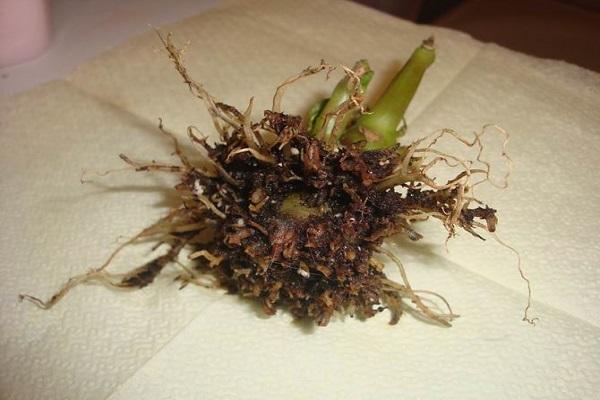
Insect pests such as thrips, spider mites, whiteflies can switch to Waller's balsam from other plants. In this case, insecticide treatment is carried out.
Preventive measures to protect plants from diseases and pests:
- Spraying flowers and watering plants with a solution of potassium permanganate.
- Timely removal of dried leaves.
- Loosening pots and flowerpots.
- The presence of drainage.
- Balanced lighting and efficient watering.
Under the right conditions, balsam rarely gets sick.
Growing difficulties
The novice gardener may face certain difficulties in growing balsams. The plant may suddenly become ill or have few buds. Let's consider the main problems that arise when caring for a flower.
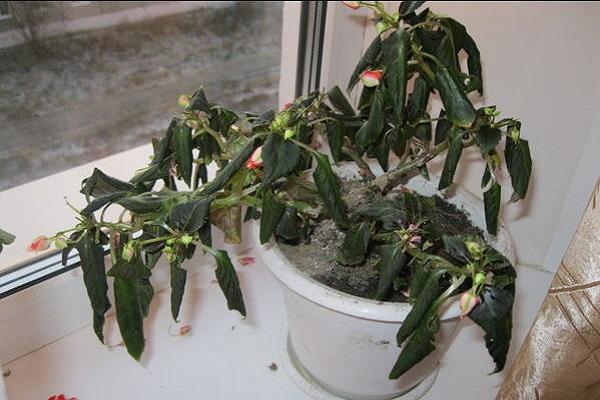
Small leaves
Leaf grinding in mature plants begins at the moment when the soil in the pot is depleted. It is necessary to transplant and prune the plant, replace the soil by laying a new drainage. A month after the transplant, feed the balsam with a mineral complex.
Leaves fall, curl, rot
These symptoms are a sign of illness. Leaf curling develops due to infection of the plant with a spider mite. The use of insecticides is necessary. Falling leaves is a sign of insufficient watering of the soil, the plant does not have enough moisture. It is necessary to balance the frequency and volume of watering.
Rotting stems and leaves occurs against the background of the development of fungal infections due to excessive watering, lack of drainage, transfer of bacteria from other plants. To avoid these phenomena, it is necessary to regularly examine the plants for signs of bacterial infections and insect larvae.
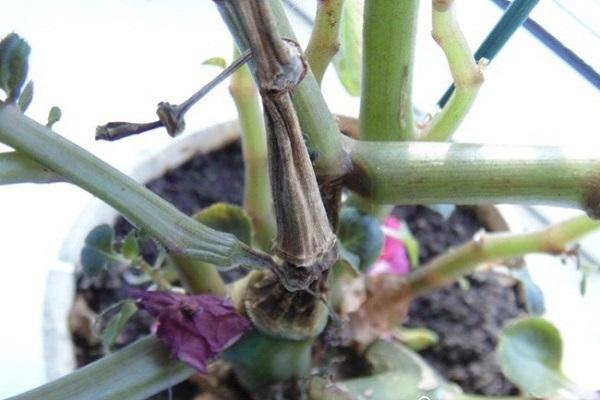
The foliage dries and falls off
If there are no signs of infectious diseases and pest damage, then the point is a lack of moisture. We must not forget that balsam comes from tropical forests. Spraying the leaves and watering regularly are essential maintenance elements.
Weak bloom
Balsam refuses to bloom, which means it lacks nutrients and light. Experienced growers plant plants in tight pots, this stimulates flowering. An excess of nitrogenous fertilizers provokes the growth of foliage to the detriment of a set of buds and flowering. It is necessary to adjust the feeding schedule and the types of fertilizers used.
Termination of flowering
If the balsam has stopped blooming, then the plant's rest period may have begun. Balsam “takes vacation” during the winter months. During this period, it is important to reduce the amount of watering and move the plant to a cool place. If the cessation of flowering occurred in the summer, then the matter is in unfavorable growing conditions, improper care or infection of the plant with fungal or viral infections.
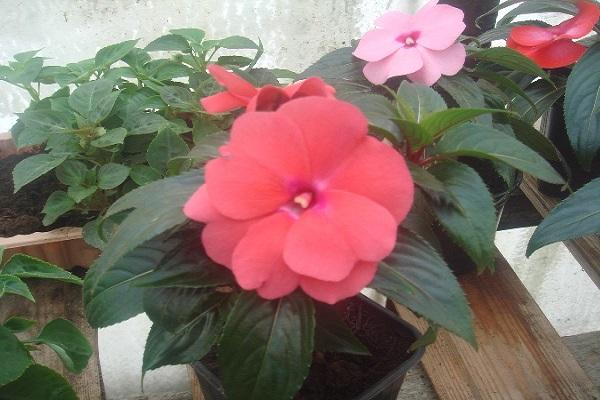
Use in landscape design
Balsam has been used in landscape design for decades. Alpine slides, flower arrangements in flower beds - beautiful combinations are created with the help of these beautiful flowers.Waller's balsam is used as curb plants.
The bushes are planted in groups and separately, colors and varieties of flowers are combined. Decorating terraces, balconies, verandas - balsam thickets will look spectacular in group flowerpots and individual pots.
Waller's balsam deservedly won the hearts of Russian gardeners, became a wonderful decoration of the garden and suburban landscape. The plant is unpretentious, easily multiplies at home, adapted to the climate of central Russia.
